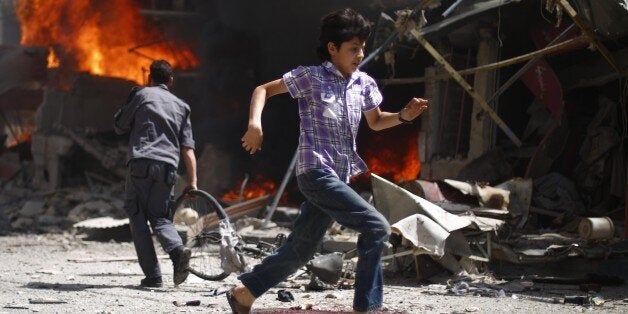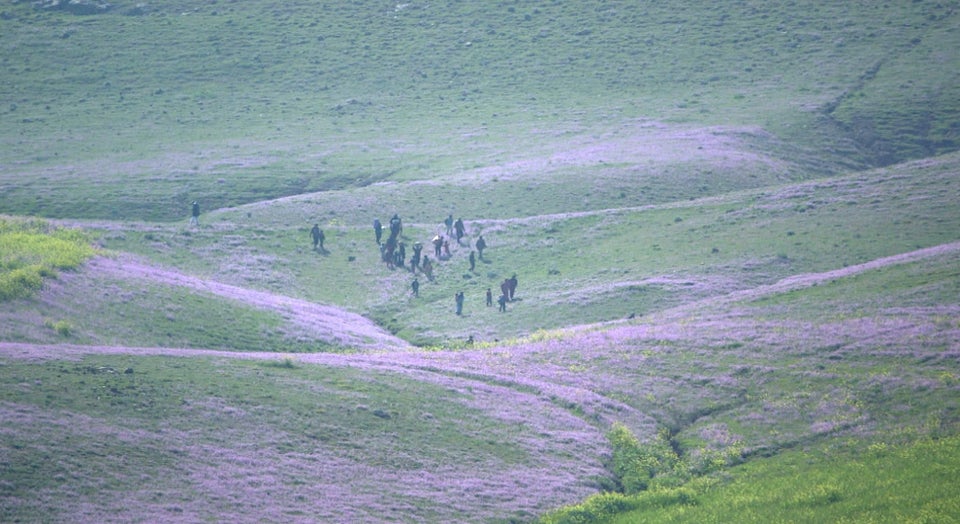
BRUSSELS -- U.S.-led anti-ISIS airstrikes aren't working. When they began one year ago, many Syrians, including myself, thought they would be a step towards ending the horrors in Syria. We thought they would root out ISIS. We thought they would bring an end to Syrian President Bashar Assad's brutality. But today, ISIS continues to win new ground across Syria while Assad's forces continue to brutally murder civilians. If the U.S. and its allies don't correct course soon, there is a risk that only a costly and deadly full-scale military intervention will defeat ISIS.
The U.S.-led coalition is too narrowly focused on an ISIS-only strategy. Assad's brutality against his own people is used as a recruiting tool for ISIS, which some see as an alternative to or protection from Assad.
While the rest of the world is focused on ISIS, the reality is that Assad is killing many more civilians. According to the Violations Documentation Center, the leading killer of Syrian civilians this year has been barrel bombs and chlorine gas dropped from Assad's helicopters. And the regime is continually intensifying their use, as seen in the recent brutal bombing of a marketplace in Douma that killed more than 100 civilians.
While the world is focused on ISIS, the reality is that Assad is killing many more civilians.
The refusal of the coalition to provide protection from Assad's barrel bombs has led to more than 12,000 deaths since the introduction of this crude weapon. Assad is only encouraged to intensify the use of barrel bombs because he faces no consequences for his crimes. Syrians see no justice and no accountability. In a crisis that has seen more than a quarter of a million deaths and half the country displaced, this new form of brutality has Syrians on the ground pleading for a no-fly zone.
No ordinary Syrian wishes to see foreign intervention in our country. But the crisis in Syria is beyond ordinary. The Syria crisis is no longer a domestic Syrian issue; it is an international issue. Syrian refugees flee outside Syria's borders, and the threat of ISIS is a global one.
A no-fly zone in Syria would address core issues facing both Syrians and people in Europe, the U.S., the wider Middle East and elsewhere. It would halt the killing of countless Syrian civilians per week. It would help alleviate suffering by creating some space into which humanitarian aid can be delivered more safely more of the time. A no-fly zone would slow the refugee exodus.
A no-fly zone would suffocate a central ISIS recruitment narrative by showing that the West is interested in protecting Syrians.
A no-fly zone would suffocate a central ISIS recruitment narrative by showing that the West is interested in protecting Syrians. It would effectively eliminate the use of barrel bombs and could thereby change Assad's military calculations so that he is forced into real negotiations on the political transition to which the international community -- including Russia -- has agreed. A no-fly zone could bring all this. Even the mere threat of a no-fly zone could be enough to move the Syrian crisis towards a political solution.
Enforcing a no-fly zone from the sea rather than the sky would not require pre-emptive strikes against the Syrian regime's air defenses. Despite the availability of this sea-based option, some in the international community still hesitate to acknowledge the benefits of a no-fly zone. They worry that it is a slippery slope to a broader intervention. They worry that once a no-fly zone is announced, the problem of Syria becomes the international community's problem. But the international community is already involved in Syria. International aircraft fly over Syrian territory. The humanitarian crisis is a problem for everyone.
The current efforts are not working because they do not address the leading killer and primary driver of the crisis: Assad's attacks on Syrian civilians. If the U.S.-led coalition continues with the failing ISIS-only approach and continues to neglect the core of the problem, it will perpetuate the bloodshed and empower ISIS.
A no-fly zone would slow the refugee exodus.
If the crisis is allowed to continue, the U.S. and Europe will remain vulnerable to ISIS and ISIS-inspired attacks. That is why the West is already on a slippery slope to full military intervention. A no-fly zone is the first step to avoiding that disastrous outcome that neither the West nor Syrians want to see.

